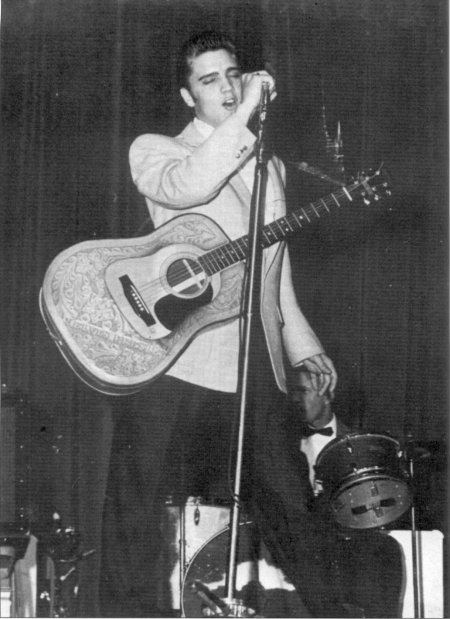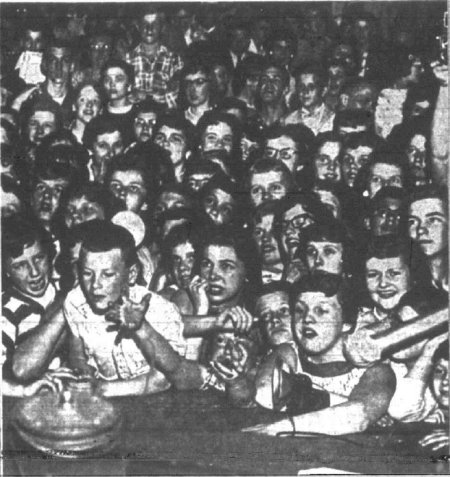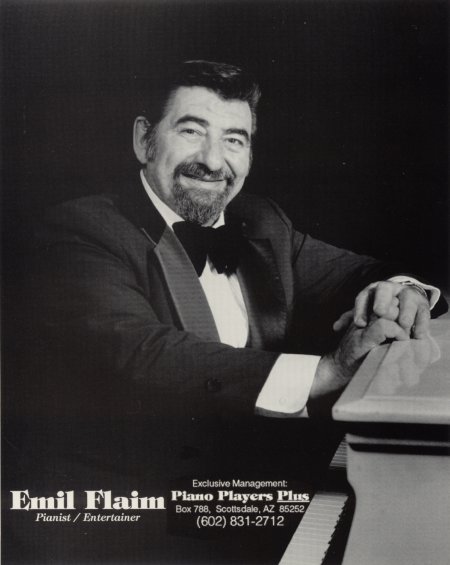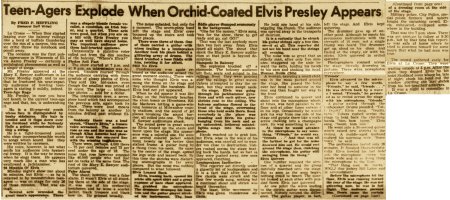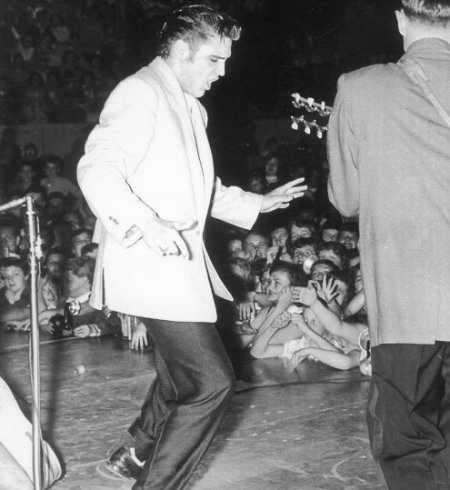 |
Mary E. Sawyer Auditorium
Mary Estella Sawyer was born in 1856 and had lived in La Crosse, Wisconsin for more than 50 years. Her fortune was derived from ownership in the Sawyer and Austin Lumber Company, and she kept it intact until she bequeathed it to the city. Her husband died at the age of 41 and she spent the rest of her life supporting herself as a seamstress. She had a knack for taking the latest New York fashions and replicating them in La Crosse.1 In 1893, she was one of the original founders of the Woman’s Industrial Exchange. At this point in history, it would have been a disgrace for a married woman to work outside the home, so creative women found ways to get around this. The founders’ initial investment of $2.00 made it possible for the creation of the Woman’s Industrial Exchange, a place for women to sell their goods. Baked and preserved goods, needlework, and other handicrafts were sold anonymously so that women were able to uphold their dignity and pride. Mary facilitated the “Fancy Work” committee of the exchange.1 At the time of her death in 1941 Mary had bequeathed the city $600,000 to build its first auditorium, the only stipulation was that it must bear her name, Mary E. Sawyer. Mary imagined red velvet seats and professional lighting, a true Shakespearian experience but what was eventually built was a multi function venue that featured a basketball court and could host live performances. When the auditorium opened in 1955 at Sixth and Vine streets, it was advertised as having the most seating available in the Coulee Region, with seating for 4,000.2
On May 14, 1956, Elvis, Scotty, Bill and D.J. performed two shows at the Sawyer auditorium in La Crosse. After completing their two week appearance in Las Vegas at the New Frontier a week earlier, they had performed the day prior with an afternoon show in St. Paul and an evening show in Minneapolis, MN. The programs were promoted as a five-star variety show featuring Elvis, The Jordanaires, Irish tenor Frank Connors, the Flaim Brothers and Rick Flaim and his Orchestra.
As Peter Guralnick wrote in Elvis Day by Day, from this point on, virtually all of Elvis' personal appearances were variety shows produced by the Colonel, on which no other performer who might be considered a rival (as opposed to dancers, jugglers, and Irish tenors) appeared. Despite pressure from both RCA and William Morris, the Colonel insisted upon this format both as a guarantee that Elvis will stand alone and as a way of performer; not just another "rock 'n roller" to be tagged with the same 'juvenile delinquent" line that the press applied increasingly to every aspect of the new music. These acts were supplied by Chicago talent agent Al Dvorin, a longtime associate of Tom who helped set up the date in La Crosse and remained with the show off and on for the next twenty-one years. Further, at this time both Time and Newsweek ran stories describing Elvis' phenomenal rise, beginning what amounted to his first exposure to the glare of national (as opposed to trade or regional) publicity.
The Flaim brothers, Rick and Emil were a musical comedy act from Chicago. Rick, the younger of the two played sax, clarinet and actually all the reed instruments while Emil played piano and accordion. They had started performing young and at ages nine and seven the brothers had performed on Bob Hope's first ever United Service Organizations (USO) show on May 6, 1941, at March Air Force Base in California. Their manager at the time was Charlie Hogan, who also managed Bob Hope, Al Dvorin had heard about them then. By the time of the show in La Crosse they also led, and were performing in, their own six piece orchestra that on this tour would also back up the other acts like Frank Connors, an Irish tenor from Detroit who had been performing since the '30s. The orchestra featured Rick Flaim and Wayne Ford on saxophones, Jerry Ross and Marty Scatena on trumpets, occasionally either Bob Allen or Gary Hicks on drums and Emil on piano/accordion. They always opened with the song Zing! Went the strings of my heart and on some dates featured female vocalist Jackie Little. Emil said that they usually only backed the Jordanaires for maybe one song and that Hugh Jarrett would be the one that would introduce Elvis.
WKBH deejay Lindy Shannon, who interviewed Elvis backstage, would later recall the near pandemonium of the concert. The band playing ahead of Elvis had to stop because of the crowd erupted when Elvis was seen in the wings.3 When Elvis appeared for two shows at the old Mary Sawyer Auditorium, he was already deep in controversy from his TV guest shots and judged by a small bunch of city do-gooders before he even walked on stage. In fact, the district attorney was called in to see if he could stop the second performance.4
The review in the La Crosse Tribune read, Dozens of La Crosse teenagers beat on doors and windows and screamed at police to get "just a look " at squirming, stomping Elvis Presley Monday night. A few tried building a human ladder to," stacking up on each other's shoulders to beat on second floor auditorium windows almost 10 feet off the ground. And Elvis? Elvis was "scared". He said so himself.5
While a full house yelled like wild banshees at the floor shows acts that preceded the king of rock 'n roll, Elvis himself was pacing nervously near the entrance to his dressing room, his guitar lying carelessly on the floor. "I'm always by myself before I go on," he said. "I'm never assured. In Las Vegas, a while ago, it was really bad. There were a lot of movie stars there, and that made it even worse." Ten minutes later Presley stepped onto the stage, immediately the soft-spoken kid with the nervous laugh disappeared and Elvis turned into a purple-coated musical demon who belted out songs like his young life depended on it."5
The results were unbelievable. Central (High School) could win a state basketball championship and the reaction would pale by comparison. When "the king" walked onto the stage, bedlam broke loose. At the first tap of the Presley leg the auditorium almost exploded.5
From there on it was an even match to see see who would entertain whom. Presley was getting a big kick from the screaming crowd as they were getting from his half dance, half song stage antics. In competition for volume, the crowd won hands down.5
Outside the auditorium there still were crowds of youngsters who forgot to buy tickets or spent last week's allowance too soon. A year old boy sat on the sidewalk in his stroller, forgotten by a baby sitter who just had to have just that "one look at Elvis."5
The kids weren't the only ones who grabbed the spirit. Elvis was "getting through" to everyone. A big, strictly, official-looking figure, crept up to a side door of the auditorium and opened it to a dozen or more "cats" crowding forlornly just outside seeing distance from "the king." "Inside, quick," he growled. "And upstairs." The grin couldn't help buy creep into his voice.5
On the floor of the building, the listeners couldn't sit still. Every time Presley opened his mouth or dragged a foot across the stage in a bit of squirming "business" 15 or 20 rushed to push or pull at each other for a place near the edge of the stage. An auxiliary policeman ran out to shake the boldest from the stage itself, before the spectators became the entertainment.5
When Presley left the stage, the mob followed him. Five La Crosse city policemen, 12 military policemen from Camp McCoy and 15 auxiliary policemen were barely enough. The swarm of teenagers broke through the first police line and managed to pursue Elvis to a point just above the stairs to his dressing room. There a line of policemen two deep finally managed to stop them.5
In his dressing room after the show, Elvis talked to eight or 10 people, with a coke balanced in each hand, thumbs tapping nervously. Echoes of "We want Elvis" still boomed from the floor of the auditorium. Shapes appeared through the glazed window of the dressing room. pointing and pounding, whispering loudly, "Is that him?"5
Presley patiently answered every question put to him by two high school girl "reporters," and threw in a quip or two of his own to put them completely at ease. "‘Mr. Presley," they called him as they fired away with "who's your favorite whatziz" questions. Elvis grinned.5
"What's been your biggest kick in the rocket to the top?" someone asked. "The audience," Elvis replied. “Do you like all the screaming and yelling?" "Sure do," came the drawled answer. "It covers up my mistakes."5
The girls kept firing questions while Elvis shuffled a pair of scarred black loafers back and forth across the floor. "I wore out a pair of these tonight, he said , "just scraping across the floor." He held up the shoes for inspection. The beading across the front was ripped and the Presley big toe headed for daylight.5
Elvis had somehow picked out a bit of teenage spirit and tucked it into his whanging "geetar." You don't have to understand it. Just listen to it. And the kids will tell you. This boy is "crazy." Here's a "cat the swings."5
Fifteen year old Vinje Dahl Jr. was one of the kids in the audience sitting in the front row with a camera and strobe light that he had received from his parents at Christmas. From his seat up front he shot about four roles of film. He said he had an inkling he might have something good on his hands after he developed the photos to share with friends at Central High School. “I took them to school the next day, and the kids just went crazy, said Dahl. “I think I sold them for a couple of bucks each. I wound up with enough for a pair of water skis. That was kind of neat."6
In a review by Fred Heffling, a writer for the Monroe County Democrat, with the headline: "Teen-Agers Explode when Orchid Coated Elvis Presley Appears," Heffling wrote: "When they started leaping over the balcony railings like a herd of buffalo thundering over the rim of a canyon. this music critic threw his notebook and pencil away. The occasion was the first public appearance in Wisconsin of Elvis Aron Presley - certainly a sociological phenomenon as well as a singer of songs."7
Heffling added: "His voice, however, is not what sends his audiences into hysterical frenzy. It is the way he moves when he sings. He appears very much like a man who has swallowed a jackhammer."7
He also wrote that "...there were perhaps 4,000 there 75 percent females and 75 percent under the age of 18. The noise that rose, however. sounded like 40,000 people who had just sat on tacks at the same time." 'That was after someone shouted during intermission "There's Elvis!" His performance lasted 26 minutes. When it was over, Elvis made a dash to the rear of the stage."7
Lindy wrote, Elvis spent the night at the old Hotel Stoddard, and I recall the commotion he caused after the concert when hordes of teens blocked traffic in front of the hotel, hoping for a glimpse of their idol. Police tried in vain to disperse the crowd, but the crowd wouldn’t leave until Elvis waved and stuck his leg out the fourth-floor window and wiggled it madly. This seemed to satisfy all but two overly-excited city school girls who climbed the hotel fire escape and somehow managed to gain entrance to Elvis' room. The only other person there besides Elvis was the RCA Victor record salesman from Milwaukee who later told me what happened during those few bizarre moments.4
The girls began sobbing wildly, pulled up their sloppy Joe sweaters and insisted that Elvis autograph their breasts, Elvis told them that they would have to leave the room, and he ushered them to the door. Later that night the girls apparently had an autograph session of their own, and after much boasting to their school friends the next day, their hero's signature was discovered on their bosoms by some teachers.4
Two days after Elvis' performance in La Crosse, a letter was written to J. Edgar Hoover on letterhead of the La Crosse Register, the newspaper published by the Catholic diocese of La Crosse suggesting that Elvis' performances were “serious to U.S. security."8 It went as follows:
|
||
|
|
Mr. J Edgar Hoover
|
|
|
|
The response was simply that the F.B.I. did not have jurisdiction in the matter raised by the La Crosse writer:
|
|||
|
|
La Crosse Register |
|
|
|
Though the letters are now public information, the addressees apparently are not. Monsignor Anthony Wagener, the editor of the Register at that time said Patrick Whelan, an assistant editor in 1956, likely wrote the letter and also a follow-up editorial titled "The Menace of Presley" in the May 25, 1956 Register. Whelan, who died in January 1987, was in the intelligence service before coming to La Crosse, Wagener said.9 Interestingly enough, Whelan, if he was the writer, acknowledged that he did not even attend the show and Lindy Shannon believed that the letter was likely prompted by the events of the girls at the Hotel afterwards. He would later write that the Tribune’s Letters to the Editor page was filled with pros and cons for weeks on end. The complaint letter was sent to the FBI two days after Elvis' appearance, and then the editorials started in the La Crosse Register — "The Menace of Presley" and one titled "Morals and Disc Jockies" which blasted me for promoting the concert and playing Presley records. Pressure was also put on all radio stations in the city to stop playing Elvis discs. It was a time for fearing anything or anybody exploring new ideas in popular music.4 Three weeks later Elvis, Scotty, Bill and D.J. would make their second appearance on the Milton Berle show and their L.A. debut. The Flaim Brothers and their orchestra would continue to open and support acts opening for Elvis on several more dates in the Midwest in 1956. An article published in the Wisconsin State college newspaper that advertised a performance by Rick at the auditorium for the college's homecoming dance the following October described them then as a ten piece orchestra made up of young men with a style that was "refreshing." Rick Flaim was also a regular in the clubs in Printers Alley in Nashville and was a good friend of Boots Randolph. Sadly, Rick died in an auto accident in 1963. The Mary E. Sawyer auditorium would also see use as the home court for La Crosse State college's basketball team, the Indians, beginning in 1957. While hosting games in the early years of the NBA, the New York Knickerbockers defeated the Minneapolis Lakers 94-93 there before a crowd of 2,093. also in 1957. Beginning in June of 1959, the auditorium was also used to hold the graduation ceremony of the Wisconsin State College.
Rock acts that ranged from Herman's Hermits and the Buckinghams to Journey and Van Halen would eventually perform in the arena. It was also home to political events. Vice President Nixon campaigned there in 1960 and former President Gerald Ford spoke there in March of 1976. During the 1970s the auditorium was no longer considered adequate to host trade shows or conventions and a new venue was planned. The last official event staged at the Mary E. Sawyer Auditorium was a campaign rally for Presidential candidate Ronald Reagan three days before the La Crosse Center opened. It remained essentially unused from then until the county bought the building in 1987 and razed it in March 1988 to make way for a new county building.10 As a result of the Freedom of Information Act, the F.B.I. files on Elvis would be made public in 1989, a year after the auditorium was razed. Though he was never the subject of an investigation, for the most part, their records consist of copies of letters from members of the public commenting on his performances, newspaper clippings, and documents reporting that he was the target of extortion attempts and death threats. The La Crosse letter was not the first. Surprisingly, the agency received the first letter as early as April 11, 1956, from someone in Memphis no less, warning of his "immoral behavior and indecency" and stressing censorship.8
About ten years ago, Vinje Dahl, now the owner of Dahl Ford in Davenport, Iowa, dug out his long lost negatives and selected ten of the best shots. He had 1000 sets printed, the first of which he donated to the La Crosse YMCA. The rest he hoped to sell to collectors.6 Lindy Shannon was repeatedly asked over the years about his impression after meeting Elvis, and his answer never varied. He was a shy, polite young gentleman of apparently good upbringing who always addressed me as sir, although I was his senior only by seven years.4 Lindy passed away on October 1, 1995 and a music scholarship program in his name was established at the University of Wisconsin through proceeds from concerts recognizing his contribution to rock and roll music. "The Godfather of La Crosse rock and roll" as he is known there now is considered an important part of music history in that area and through the efforts of his friend, La Crosse rock and roll music historian Bill Harnden and La Crosse Radio Classic Rock 100.1, Lindy will have flowers on his grave forever.
Emil Flaim continues to perform. He is now joined by his wife Shirley on vocals performing several nights a week at Crazy Earl's in Peoria, AZ. page added May 27, 2009 All articles and ads are courtesy of Bill
Petersen, Peg Jerome, Megan Isley and the La Crosse Public Library
Archives. Special thanks to them and to Pat Smith of Classic Rock 100.1,
Bill Harnden and to Emil Flaim for their assistance with this page This review of the La Crosse show appeared in the Monroe County Democrat newspaper in neighboring Sparta, Wisconsin three days after the show.
article added July 28, 2009 Previously unpublished Pics from La Crosse
Old pictures tell the story of the day Elvis came to town Dave "Rudy" Rudrud, owner of Shooter's bar on 3rd Street, has shared with Second Supper several previously unpublished photos of Elvis Presley's visit to La Crosse in 1956. Rudrud got the photographs of the May l4 concerts (two shows) from his late uncle, Ray Plamadore, former general manager of the Mary E. Sawyer Auditorium, where Elvis performed. (For newcomers, the auditorium was formerly on the site of the county building on 6th and Vine streets.)
The collection includes photos (photographer unknown) of Presley's concert - his first in Wisconsin, his three-man band, local fans and a backstage interview of the 2l-year-old Presley by Lindy Shannon, a well-known local radio show host and music promoter. The photos, moreover, led Rudrud to another insight of interest to Elvis fans: a You Tube slide show with audio from the Shannon interview. "I was trying to do research on the photos and found it through that," Rudrud said. The slide show provided no background as to who was doing the interview. although one person identified Shannon in the comments section. "I recognized the voice right away," Rudrud said. "He (Shannon) had a radio program, when I was a kid, about music."
Shannon worked many years for WKBH radio, in the record department of Leithold Music and with Lin-Beck Enterprises, which was his music promotion business. He died in 1995. "Everybody knew Lindy," said Rudrud, who described Shannon as a "mover and shaker" in the rock and roll industry in this town.
The interview includes discussion of Presley's two-year music career, hints of a movie career yet to come, his First Vegas visit and more. This section contains excerpts originally published in the September 17, 2009 edition of Second Supper. Second Supper is a community weekly newspaper published 48 times a year, on Thursdays by Bartanese Enterprises LLC. Special Thanks to FEEC's/thefool for the link to this publication. section added October 22, 2009
|
|||
| All photos on this site (that we didn't borrow) unless otherwise indicated are the property of either Scotty Moore or James V. Roy and unauthorized use or reproduction is prohibited. | |||














